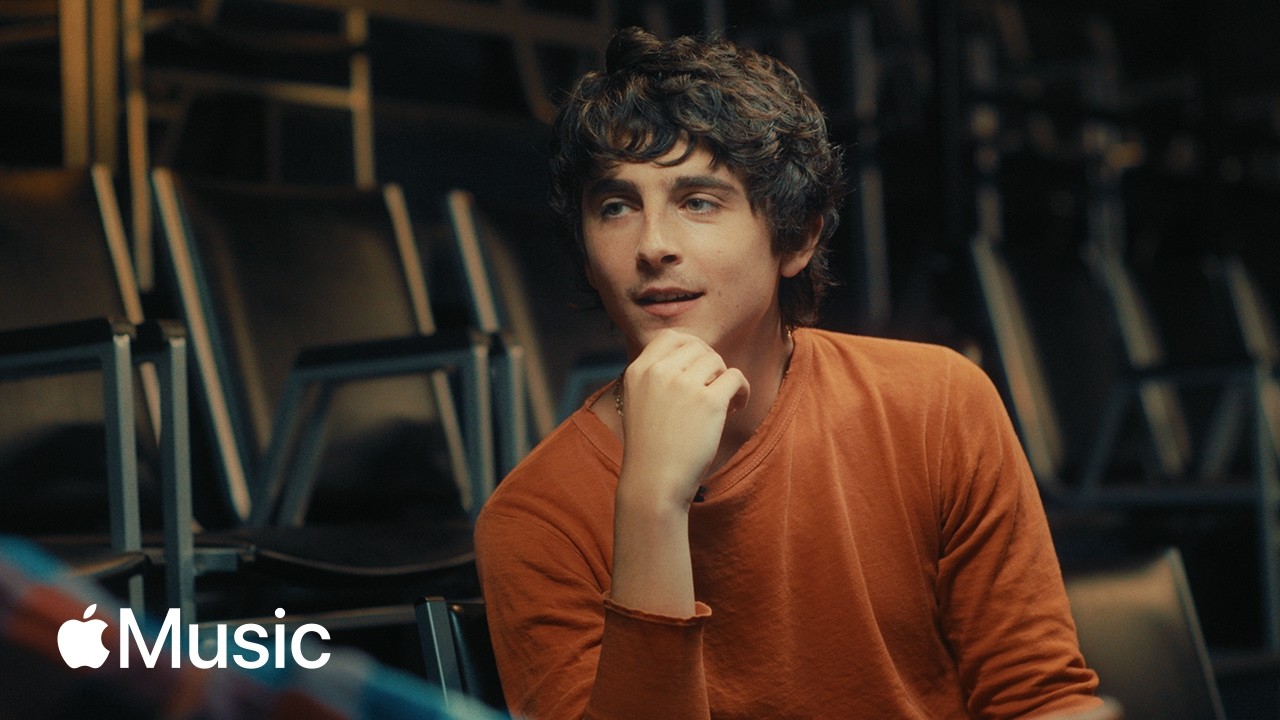
Timothée Chalamet is playing Bob Dylan in the new biopic A Complete Unknown, set for release on Christmas day. We’ve seen a couple trailers for the film so far, and now Chalamet has given his first in-depth interview about the role to Zane Lowe at Apple Music.
In the interview, Chalamet said he had to learn how to play 13 Bob Dylan songs for the movie and that he worked with a harmonica coach for five years to prepare for the role, as well as a movement coach to help him mimic Dylan’s physical presence. “And then, for my own spirit-gathering, for lack of a better metaphor, I retraced Bob’s steps through Chicago and Madison, Wisconsin. And I started in Hibbing, in Duluth. And I spent about a week where he is from in Minnesota,” he said.
However, Chalamet did not attempt to exactly replicate Dylan’s singing on classic recordings: “This is interpretive. This is not definitive. This is not fact. This is not how it happened. This is a fable.” He elaborated on that sentiment:
This is about not only myself interpreting Bob, but Edward Norton interpreting Pete Seeger, Monica interpreting Joan Baez and Boyd Holbrook interpreting Johnny Cash in this moment in the ’60s where American culture was a kaleidoscope and Greenwich Village was a kaleidoscope, the way culture still is now too, but without being a history teacher, that was the beginning, personalized music, stuff with intention, stuff with poetry, it all started there in the movie.
We did these prerecords, but I’m not playing the guitar on the prerecords with Nick Baxter, he’s a super talented musical supervisor, and the music, and I would butt heads with Nick a lot, the guitar sounded really friendly. It’s hard to get that sound. I mean, he’s playing on a guitar that was basically falling apart. And I also found my voice had a baritone, it all sounded clean. And I was doing vocal warmups with Eric Vetro, who was this vocal coach who helped me on Wonka and helped me sing Grand on Wonka. And then, here, I would listen to it back and I’m like, “Man, this sounds too clean.”
And then, when we would do it on set, it was “Song To Woody,” which is one of my favorite Bob Dylan songs ever. It was the first one we shot in the movie. You couldn’t do it to a playback because it’s such an intimate scene. It’s in a hospital room with Woody Guthrie and Pete Seeger. And I did it live in it and it went great. And I’m making mistakes in the guitar a little bit here and there, but you can kind of fill those in after. I went home and I wept that night, not to be dramatic, but it’s a song I’d been living with for years and something I could relate to deeply.
And I also felt, I come back to this word a lot, I felt like it was the most dignified work I’d ever done. And dignity might be a weird word there, but it felt like so dignified and humble, we’re just bringing life to a thing that happened 67 years ago. I went, oh, of course, Leo and Daniel Day-Lewis. Of course, they do these biopics. It kind of all clicked because there’s dignity to it. You’re not pulling out of thin air, this happened.
When I did “Song To Woody,” which is a song, like I said, I could relate too deeply, and it went great. Then I was like, all right, I’m going to fight this war until the rest of the movie. And Nick Baxter and I, we’re great friends, and he came to my house the other night, and we’re great friends, but over the course of the movie, it was a constant… The metaphor was like I was throwing this delicately made china on the ground each time we didn’t use a prerecord, something we had crafted in LA for six months, but there’s not a single prerecord in the movie. And then, Jim would say, to console Nick or myself, “Treat that as like a work session, you were practicing to do it live.” Because all of a sudden, Edward Norton would say too, something clicked in my voice, there was a certain rawness. Those microphones, those old school microphones we were using when playing in concert halls, I could get the strum better and I could get how he was singing.
Watch the full interview below.
